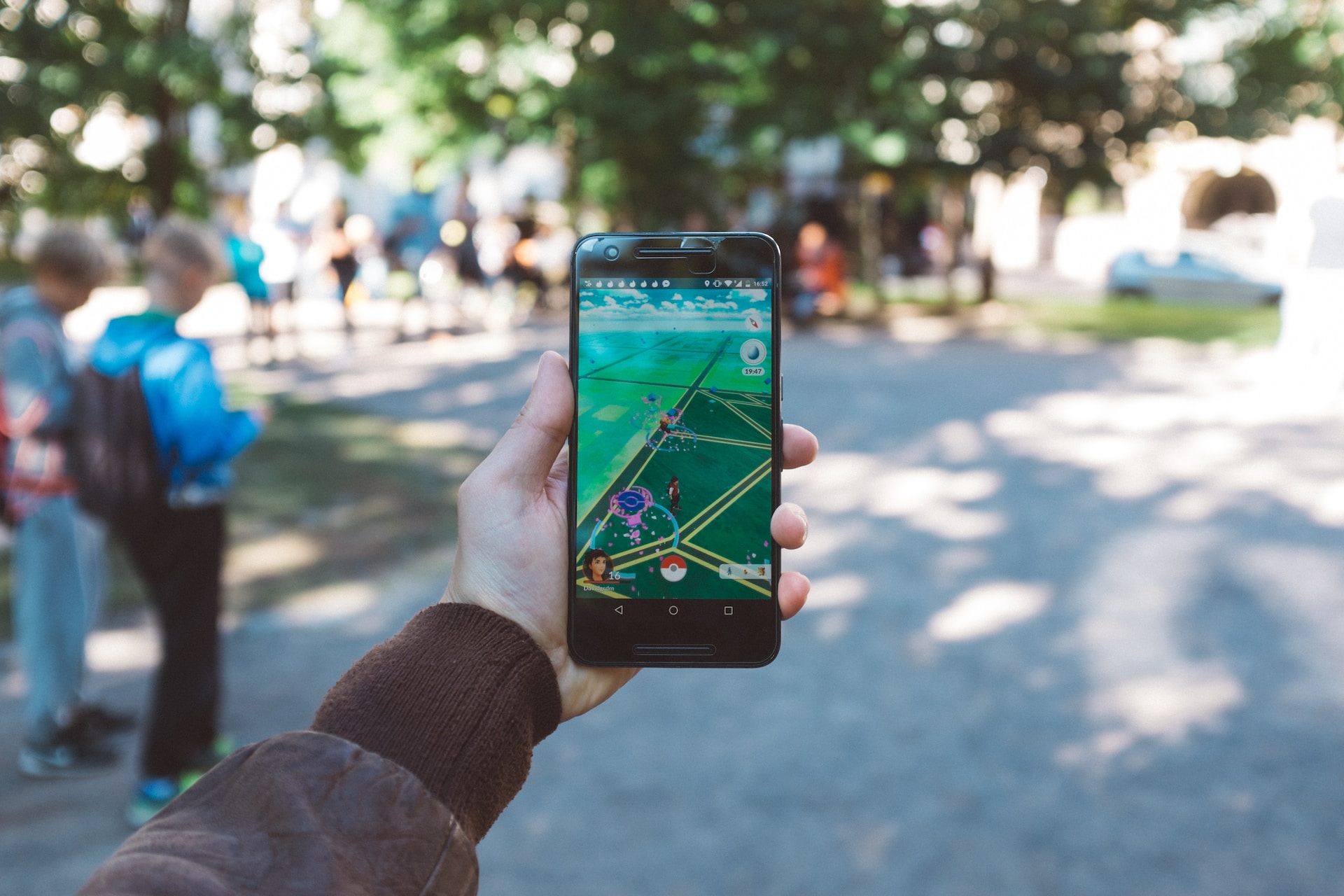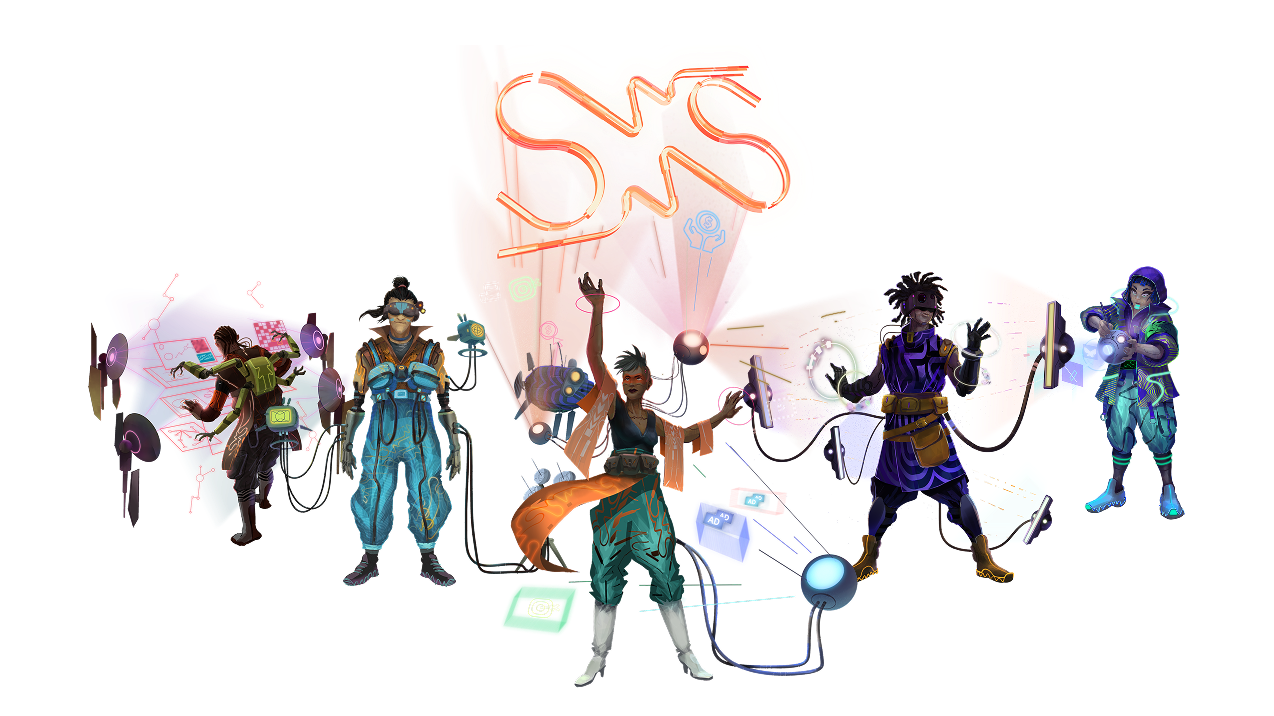The Future of B2B Marketing: Unveiling Next-Generation Techniques


As B2B marketers we are always looking for new ways and technologies to help improve our marketing efforts. In this article we'll introduce and discuss some of the areas of B2B marketing that are developing quickly and that are likely to contribute more and more to marketing strategies in the coming years.
Community Marketing for B2B Marketers
Community marketing is an approach that emphasizes the creation and cultivation of a community of individuals who share common interests, values, and goals. It involves fostering meaningful interactions, facilitating knowledge-sharing, and building relationships within the community. Rather than solely focusing on transactional marketing, community marketing places an emphasis on building long-term engagement and loyalty among community members.

The Importance of Community Marketing for B2B Marketers
1. Trust and Credibility: Community marketing helps establish trust and credibility for a brand. By creating a space where members can openly discuss challenges, share insights, and seek advice, you can position your brands as thought leaders and a reliable source of expertise. This trust and credibility lead to increased brand loyalty and advocacy.
2. Enhanced Customer Engagement: Engaging with a community fosters a deeper connection between the brand and its audience. By providing valuable resources, organizing events, and facilitating discussions, B2B marketers can keep their target audience engaged, resulting in increased customer satisfaction and retention.
3. Peer-to-Peer Influence: Community marketing harnesses the power of peer-to-peer influence. When community members share their positive experiences, insights, and success stories, it creates a snowball effect, driving organic referrals and expanding the brand's reach. Peer recommendations carry significant weight and can influence buying decisions among B2B buyers.
4. Continuous Learning and Innovation: A vibrant community provides an environment for continuous learning and innovation. By facilitating discussions, hosting webinars, and organizing events, B2B marketers can tap into the collective knowledge and expertise of the community. This not only benefits community members but also enables marketers to gain valuable insights and identify emerging trends.
Implementing a Successful Community Marketing Strategy
1. Identify and Understand Your Target Audience: Start by identifying your target audience and understanding their needs, pain points, and aspirations. This will help you create a community that resonates with their interests and provides relevant content and resources.
2. Build an Engaging Online Platform: Create an online platform, such as a dedicated forum, social media group, or community website, where community members can connect and interact. Ensure the platform is user-friendly, encourages participation, and offers value-added features such as educational resources, expert Q&A sessions, and exclusive content.
3. Foster Active Participation: Encourage active participation within the community by initiating discussions, posing thought-provoking questions, and seeking input from members. Highlight member achievements, share success stories, and provide opportunities for members to showcase their expertise. This fosters a sense of belonging and motivates community members to engage regularly.
4. Offer Valuable Content and Resources: Share valuable content, industry insights, case studies, and educational resources that address the challenges and interests of community members. Provide actionable tips, best practices, and practical guidance that help members succeed in their respective fields. By consistently delivering high-quality content, you establish yourself as a trusted resource within the community.
5. Organize Events and Webinars: Plan and host virtual or in-person events, webinars, workshops, and networking sessions that bring community members together. These events provide opportunities for networking, knowledge-sharing, and building relationships. Involve industry experts, thought leaders, and influencers to add value and attract wider participation.
6.Encourage Collaboration and Contribution: Actively encourage community members to collaborate, share their experiences, and contribute their expertise. By facilitating a supportive and inclusive environment, you foster meaningful connections and empower community members to learn from each other.
7. Measure and Adapt: Continuously monitor community engagement, feedback, and key metrics to measure the success of your community marketing efforts. Adapt your strategy based on member insights and evolving needs to ensure the community remains relevant and valuable.
Community marketing presents an exciting opportunity for B2B marketers to create thriving communities, foster engagement, and build lasting connections with their target audience. By establishing trust, facilitating peer-to-peer influence, and providing valuable resources, B2B marketers can cultivate communities that drive brand loyalty, advocacy, and business growth. Embrace community marketing as a transformative strategy and unlock the full potential of building strong connections within your industry.
B2B Influencer Marketing
B2B influencer marketing involves partnering with influential individuals who have an established reputation and a loyal following in a specific industry. These influencers possess in-depth knowledge, expertise, and a strong online presence, making them trusted voices among their audience. By collaborating with them, you can leverage their influence to expand brand reach, enhance credibility, and drive targeted engagement.

The Importance of B2B Influencer Marketing
1. Trust and Credibility: Influencers have built trust and credibility within their niche by consistently providing valuable insights and thought leadership. When they endorse a B2B brand, their audience sees it as a genuine recommendation, which helps establish trust and credibility for the brand. This trust can significantly impact the buying decisions of B2B customers.
2. Reach and Amplification: Influencers have a dedicated and engaged following that aligns with the target audience of B2B brands. By partnering with influencers, marketers can tap into their existing reach and leverage their platforms to amplify brand messages, content, and campaigns. This enables marketers to expand their brand's visibility and attract the attention of their target market more effectively.
3. Thought Leadership and Industry Insights: Influencers are often industry experts with a deep understanding of market trends, challenges, and opportunities. Collaborating with them allows B2B marketers to tap into their expertise and share valuable thought leadership content. This association positions the brand as a credible source of industry insights, helping to establish authority and thought leadership within the target market.
Leveraging B2B Influencer Marketing Effectively
1. Identify the Right Influencers: Begin by identifying influencers who align with your brand values, industry focus, and target audience. Look for influencers who have a strong online presence, a demonstrated understanding of your industry, and an engaged following. Conduct thorough research and vetting to ensure they have the credibility and influence necessary to impact your target market.
2. Develop Authentic Relationships: Building authentic relationships with influencers is key to successful collaboration. Engage with them genuinely, share their content, and provide meaningful value before approaching them for a partnership. Invest time in understanding their goals and interests to ensure a mutually beneficial collaboration that aligns with both parties' objectives.
3. Co-create Compelling Content: Collaborate with influencers to co-create valuable content that resonates with your target audience. Leverage their expertise to provide unique insights, case studies, or practical tips that address your audience's pain points. This collaboration not only enhances the credibility of your content but also helps expand its reach when influencers share it with their audience.
4. Leverage Different Formats and Channels: Influencer marketing is not limited to blog posts or social media endorsements. Explore various formats such as webinars, podcasts, videos, and live streams. Each format allows influencers to share their knowledge and insights authentically while leveraging their preferred channels to reach their audience effectively.
5. Measure and Optimize: Establish key performance indicators (KPIs) to measure the impact of your influencer marketing efforts. Track metrics such as reach, engagement, website traffic, lead generation, and conversions. Use these insights to optimize your approach, identify successful strategies, and make data-driven decisions for future influencer collaborations.
B2B influencer marketing is a powerful strategy that enables marketers to tap into the trust, reach, and expertise of influential individuals within their industry. By building authentic relationships, co-creating valuable content, and leveraging the influencer's platform, B2B marketers can expand their brand's visibility, enhance credibility, and drive business growth. Embrace B2B influencer marketing as a strategic tool and unlock its potential to make a significant impact on your marketing efforts, fostering strong connections with your target audience and driving long-term success.
Understanding Data-Driven Personalisation
Data-driven personalisation involves using customer data to customize marketing messages, content, and experiences according to the unique preferences, behaviors, and needs of individual buyers. By analyzing data points such as demographics, browsing behavior, purchase history, and engagement patterns, you can start to create highly targeted and relevant campaigns that deliver the right message to the right person at the right time.

The Importance of Data-Driven Personalization in B2B Marketing
1. Enhanced Customer Experience: Personalization creates a tailored and relevant experience for B2B buyers. By delivering content and recommendations that align with their specific interests and pain points, marketers can significantly improve customer satisfaction, engagement, and loyalty. Personalization shows that you understand and value your customers' needs, fostering stronger connections and long-term relationships.
2. Increased Conversion Rates: When B2B buyers receive personalized messages and offers that address their unique challenges or goals, they are more likely to take action. By delivering timely and personalized content that guides buyers through their decision-making journey, marketers can increase conversion rates, shorten sales cycles, and drive revenue growth.
3. Improved Customer Retention: Data-driven personalization is not limited to the acquisition stage; it extends to post-purchase interactions as well. By leveraging customer data, marketers can continue to deliver personalized experiences, recommendations, and support that strengthen customer loyalty and encourage repeat business. Repeat customers often have higher lifetime value and can become advocates for your brand.
Leveraging Data-Driven Personalisation Effectively
1. Collect and Analyze Customer Data: Start by collecting relevant customer data from various touch points such as website interactions, email engagement, and social media interactions. Use analytics tools to analyze this data and identify patterns, preferences, and behaviors that can inform your personalization efforts.
2. Segment Your Audience: Segment your target audience into smaller groups based on shared characteristics, interests, or buying behaviors. This segmentation allows you to create more specific and personalized messaging for each group. Develop detailed buyer personas that reflect the unique needs, pain points, and motivations of each segment.
3. Deliver Personalized Content: Tailor your content based on the insights gained from customer data and segmentation. This can include personalized emails, website experiences, dynamic landing pages, and targeted advertising. Use personalization tokens to address recipients by their name and incorporate dynamic content that aligns with their preferences.
4. Implement Marketing Automation: Leverage marketing automation tools to deliver personalized experiences at scale. Set up triggered campaigns based on specific actions or events, such as abandoned cart reminders, product recommendations based on previous purchases, or personalized onboarding sequences for new customers.
5. Continuously Test and Optimize: Personalization is an iterative process. Continuously test different messaging, content variations, and personalization techniques to identify what resonates best with your audience. Monitor key performance indicators (KPIs) such as click-through rates, conversion rates, and engagement metrics to evaluate the effectiveness of your personalization efforts.
Data-driven personalization is a powerful strategy that enables B2B marketers to create tailored experiences, relevant content, and personalized messaging that engage and resonate with individual buyers. By leveraging customer data, segmenting your audience, and delivering personalized content, you can enhance the customer experience, increase conversion rates, and foster long-term loyalty. Embrace data-driven personalization as a core strategy in your B2B marketing efforts and unlock its potential to drive meaningful connections, engagement, and business growth.
Customer Advocacy and User-Generated Content
Customer advocacy involves turning your satisfied customers into enthusiastic brand ambassadors who willingly promote your products or services. User-generated content (UGC) refers to any content created by customers or users of a brand, such as reviews, testimonials, social media posts, blog articles, and videos. When customers share their positive experiences and create content related to your brand, it serves as a powerful form of social proof that influences others' perceptions and purchasing decisions.

The Importance of Customer Advocacy and User-Generated Content in B2B Marketing
1. Authenticity and Trust: Customer advocacy and UGC provide an authentic and trustworthy perspective on your brand. Potential buyers are more likely to trust the opinions and experiences of their peers rather than traditional marketing messages. By sharing real stories and experiences, customer advocates help build trust and credibility for your brand, increasing the likelihood of conversions.
2. Increased Brand Reach and Awareness: When customers create content about your brand and share it with their networks, it expands your brand's reach to new audiences. UGC has the potential to go viral, reaching a wider audience that may not have been exposed to your brand through traditional marketing efforts. This increased exposure raises awareness and attracts new prospects to your business.
3. Engagement and Community Building: Customer advocacy and UGC foster a sense of community around your brand. By encouraging customers to share their experiences and interact with your brand, you create a dialogue that deepens engagement and strengthens relationships. This active participation builds a loyal customer base and encourages advocacy among your customers.
4. Cost-Effective Marketing: Leveraging customer advocacy and UGC can significantly reduce marketing costs. Instead of solely relying on paid advertising, you tap into the creativity and enthusiasm of your customers to generate valuable content. This content serves as free advertising and promotes your brand through genuine, relatable experiences, saving you money while still achieving marketing objectives.
Leveraging Customer Advocacy and User-Generated Content Effectively
1. Cultivate a Customer-Centric Culture: Foster a customer-centric culture within your organization, prioritizing customer satisfaction and delivering exceptional experiences. Focus on building long-term relationships with your customers and exceeding their expectations. Satisfied customers are more likely to become advocates and create UGC.
2. Encourage and Incentivize Advocacy: Actively encourage your satisfied customers to share their positive experiences and create UGC. Develop advocacy programs or referral initiatives that reward customers for spreading the word about your brand. Provide incentives such as discounts, exclusive access, or recognition to motivate and appreciate their advocacy efforts.
3. Showcase and Amplify UGC: Share user-generated content across your marketing channels to amplify its impact. Feature customer testimonials, reviews, and social media posts on your website, social media profiles, and email campaigns. Highlight the authentic stories and experiences shared by your customers to inspire trust and engagement among prospects.
4. Engage and Interact with Advocates: Engage with your customer advocates by responding to their UGC, acknowledging their contributions, and expressing gratitude. Showcasing this engagement publicly demonstrates your appreciation for their support and further strengthens the customer relationship.
5. Monitor and Moderate UGC: Regularly monitor and moderate the UGC associated with your brand to ensure it aligns with your values and guidelines. Encourage positive and constructive discussions while promptly addressing any negative or misleading content. Actively manage your online reputation to maintain the integrity of your brand.
Customer advocacy and user-generated content have emerged as powerful strategies in B2B marketing, offering authentic and influential voices to amplify your brand's reach and credibility. By cultivating a customer-centric culture, encouraging advocacy, showcasing UGC, and engaging with your customer advocates, you can harness the power of these strategies to build trust, increase brand awareness, and foster meaningful connections with your target audience. Embrace customer advocacy and UGC as essential components of your B2B marketing strategy and unlock the potential to drive remarkable business growth.
Harnessing Machine Learning in B2B Marketing
Machine learning is a branch of artificial intelligence (AI) that enables systems to learn and improve from experience without being explicitly programmed. It involves training algorithms on large datasets to identify patterns, make predictions, and automate tasks. In the context of B2B marketing, machine learning can analyze vast amounts of data, identify customer behaviors and preferences, and optimize marketing strategies to deliver more targeted and personalized experiences.

The Importance of Machine Learning in B2B Marketing
1. Data-Driven Insights: Machine learning algorithms excel at analyzing complex datasets to extract meaningful insights. By leveraging these insights, B2B marketers can gain a deeper understanding of their target audience, identify patterns and trends, and make data-driven decisions. This enables marketers to optimize their campaigns, identify opportunities, and refine their strategies for better results.
2. Enhanced Personalization: Personalization is a key aspect of modern marketing. Machine learning allows marketers to create highly personalized experiences by analyzing customer data and behavior. By understanding individual preferences, interests, and buying patterns, marketers can deliver tailored content, recommendations, and offers that resonate with each customer, driving engagement and conversions.
3. Predictive Analytics: Machine learning algorithms can forecast future outcomes based on historical data. B2B marketers can leverage predictive analytics to anticipate customer behavior, identify potential leads, and optimize their marketing campaigns. This enables marketers to be proactive, anticipate customer needs, and deliver relevant content and offers at the right time.
4. Automation and Efficiency: Machine learning can automate repetitive tasks and optimize processes, freeing up valuable time for marketers. From data analysis and lead scoring to content curation and campaign optimization, machine learning algorithms can handle these tasks with speed and accuracy, allowing marketers to focus on strategy, creativity, and building relationships.
Leveraging Machine Learning Effectively
1. Data Collection and Preparation: Start by collecting relevant data from various sources, including customer interactions, website analytics, and CRM systems. Ensure data quality and consistency, and preprocess the data to make it suitable for machine learning algorithms.
2. Identify Use Cases: Determine specific use cases where machine learning can add value to your B2B marketing efforts. This can include lead scoring, customer segmentation, content personalization, predictive analytics, or dynamic pricing. Prioritize use cases that align with your marketing objectives and can deliver the most significant impact.
3. Select the Right Algorithms and Tools: Explore different machine learning algorithms and tools that are relevant to your use cases. Consider factors such as algorithm complexity, scalability, and ease of integration with existing systems. Seek guidance from data scientists or experts to select the most suitable options for your specific needs.
4. Train and Validate Models: Train machine learning models using historical data and validate their performance using appropriate metrics. Continuously refine and update the models as new data becomes available. Regularly evaluate model accuracy and make necessary adjustments to ensure optimal performance.
5. Test, Measure, and Iterate: Implement machine learning solutions in your marketing campaigns on a smaller scale initially. Test and measure the outcomes, compare against control groups, and analyze the results. Iterate and optimize your models and strategies based on the insights gained from these tests.
Machine learning is a game-changing technology that empowers B2B marketers to unlock valuable insights, deliver personalized experiences, and automate processes. By harnessing the power of machine learning algorithms, marketers can make data-driven decisions, enhance personalization, leverage predictive analytics, and optimize efficiency. Embrace machine learning as a core component of your B2B marketing strategy and unlock its potential to achieve exceptional results, gain a competitive edge, and drive business growth in the digital age.
Leveraging the Capabilities of Large Language Models
Large language models (LLM), like GPT, are advanced AI models trained on vast amounts of text data. They can understand, generate, and respond to human-like text, making them a valuable resource for a range of applications. These models have the ability to comprehend context, generate coherent responses, and even simulate conversations, making them ideal for content generation, customer support, and data analysis.

The Importance of Large Language Models in B2B Marketing
1. Efficient Content Creation: Creating high-quality, engaging content is a challenge for many B2B marketers. Large language models can assist by generating content ideas, drafting articles, and even suggesting improvements. Marketers can leverage these models to streamline content creation processes, improve efficiency, and maintain a consistent flow of valuable content.
2. Enhanced Customer Engagement: Interacting with customers in a personalized and timely manner is vital for B2B marketers. Large language models can facilitate customer engagement by providing instant responses to inquiries, offering relevant recommendations, and assisting with product selection. By leveraging these models for customer support and chatbot interactions, marketers can deliver seamless, efficient experiences that foster engagement and satisfaction.
3. Market Research and Insights: Understanding market trends, analyzing customer sentiment, and identifying opportunities are crucial for effective B2B marketing strategies. Large language models can assist in mining and analyzing vast amounts of text data, such as social media posts, customer reviews, and industry reports. Marketers can gain valuable insights into customer preferences, emerging trends, and competitor analysis, empowering them to make data-driven decisions.
4. Personalization and Recommendation: Personalization is a key driver of successful marketing campaigns. Large language models can analyze customer data, predict preferences, and generate personalized recommendations. By leveraging these models, B2B marketers can deliver tailored content, targeted offers, and relevant suggestions, enhancing customer experiences and driving conversions.
Leveraging Large Language Models Effectively
1. Content Generation and Curation: Utilize large language models to generate content ideas, create drafts, and assist in editing. Combine the creative capabilities of human marketers with the efficiency and suggestions offered by the models to produce high-quality, engaging content.
2. Customer Support and Chatbots: Implement large language models to enhance customer support by providing instant responses to common inquiries, resolving issues, and offering personalized recommendations. Integrate chatbots powered by these models into your website or messaging platforms to provide efficient and helpful customer interactions.
3. Market Research and Analysis: Leverage large language models to mine and analyze text data for market research. Extract customer insights, identify trends, and gain a competitive edge by understanding the sentiments expressed by your target audience and industry experts.
4. Personalization and Recommendation Engines: Integrate large language models into your recommendation engines to provide personalized product suggestions, content recommendations, and tailored offers. Utilize the models' understanding of customer preferences to deliver targeted messaging that resonates with your audience.
5. Ethical Considerations and Oversight: While large language models offer immense capabilities, it is crucial to approach their use with ethical considerations in mind. Ensure data privacy, transparency, and avoid biases by regularly monitoring and auditing the outputs generated by the models.
Large language models have emerged as a game-changer for B2B marketers, offering powerful capabilities for content creation, customer engagement, market insights, and personalization. By effectively harnessing the capabilities of these models, marketers can streamline content creation processes, deliver personalized experiences, gain valuable market insights, and drive impactful marketing campaigns. Embrace large language models as a valuable tool in your B2B marketing arsenal and unlock their potential to stay ahead in the dynamic world of digital marketing.
Unleashing Immersive Experiences
Augmented reality is a technology that blends digital content with the real world, providing an interactive and immersive experience. It involves overlaying virtual elements, such as 3D objects, animations, or information, onto the physical environment through the use of devices like smartphones, tablets, or smart glasses. Augmented reality enhances user engagement by bridging the gap between the digital and physical worlds.

The Importance of Augmented Reality in B2B Marketing
1. Immersive Experiences: Augmented reality enables B2B marketers to create immersive experiences that captivate their audience. By overlaying virtual objects or information onto the real world, marketers can offer interactive product demonstrations, virtual tours, or simulations that allow customers to experience products or services in a more engaging and memorable way.
2. Enhanced Product Visualization: Augmented reality allows customers to visualize products or solutions in their real-world environment. B2B marketers can leverage this technology to showcase complex products, machinery, or architectural designs, enabling customers to see how they fit into their specific context. This enhances the understanding of product features and benefits, leading to more informed purchase decisions.
3. Virtual Training and Support: Augmented reality can be a valuable tool for providing virtual training and support to customers. B2B marketers can create interactive tutorials, user guides, or troubleshooting experiences that overlay instructions and information onto physical objects. This helps customers understand product usage, troubleshoot issues, and enhances their overall satisfaction with the product or service.
4. Interactive Marketing Campaigns: Augmented reality opens up new possibilities for interactive marketing campaigns. B2B marketers can create AR experiences that engage customers at trade shows, conferences, or in-store displays. These experiences can include interactive games, virtual try-on experiences, or product configurators, allowing customers to actively participate and explore offerings in a fun and memorable way.
Leveraging Augmented Reality Effectively
1. Define Clear Objectives: Clearly define your marketing objectives and how augmented reality aligns with them. Determine the specific use cases where augmented reality can add value, such as product demonstrations, training, or interactive campaigns.
2. Develop Compelling Experiences: Focus on creating compelling augmented reality experiences that engage and excite your target audience. Consider the user journey, design interactive elements, and ensure seamless integration of virtual content with the real world. Collaborate with designers and developers to bring your ideas to life.
3. Choose the Right AR Platform: Select an augmented reality platform or development tool that aligns with your requirements. Consider factors such as ease of use, compatibility with target devices, scalability, and available features. Explore platforms like ARKit, ARCore, or web-based AR frameworks for building your AR experiences.
4. Promote and Amplify Experiences: Market and promote your augmented reality experiences to maximize their impact. Utilize social media, website integrations, and targeted advertising campaigns to generate awareness and drive engagement. Encourage users to share their AR experiences on social platforms to increase reach and organic promotion.
5. Measure and Iterate: Continuously measure the performance and impact of your augmented reality campaigns. Analyze user engagement, conversion rates, and customer feedback to refine and iterate your AR experiences. Incorporate user insights and feedback into future iterations to enhance the effectiveness of your augmented reality marketing efforts.
Augmented reality has emerged as a powerful tool for B2B marketers, offering the ability to create immersive experiences, enhance product visualization, provide virtual training, and drive interactive marketing campaigns. By effectively leveraging the capabilities of augmented reality, marketers can engage their audience, differentiate their brand, and deliver memorable experiences that drive impactful results. Embrace augmented reality as a valuable tool in your B2B marketing strategy and unlock its potential to captivate customers and create lasting impressions.
Product-Led Growth for B2B Marketers
In today's dynamic and fiercely competitive business world, B2B marketers are always on the lookout for inventive strategies that can fuel growth and set them apart from the competition. One approach that has been making waves is Product-Led Growth (PLG).
PLG is a customer acquisition and expansion model that puts the spotlight on the product experience and its value as the main catalyst for growth. In this article, let's delve into what Product-Led Growth really means, why it holds significant importance, and how B2B marketers can harness its power to achieve long-term business success. So, grab a cup of coffee, sit back, and let's explore the fascinating world of Product-Led Growth together!

Defining Product-Led Growth
Product-Led Growth is a go-to-market strategy that prioritizes the product experience and empowers users to derive value from a product before making a purchase decision. Unlike traditional sales-driven models, where marketing and sales teams are responsible for converting prospects, PLG emphasizes the product itself as the key driver of acquisition, activation, and expansion.
Essential Components of Product-Led Growth
1. Seamless Onboarding: Product-Led Growth starts with a seamless onboarding experience that allows users to get started quickly and experience immediate value. This involves intuitive user interfaces, interactive tutorials, and proactive customer support to help users overcome any barriers to adoption.
2. Value-Focused Features: PLG focuses on delivering value to users at every step. By providing essential features and functionalities upfront, businesses can captivate users and demonstrate the product's potential. This builds trust and encourages users to explore and adopt the product more extensively.
3. Self-Serve Sales and Pricing: PLG empowers users to explore, evaluate, and purchase the product independently. Pricing models are often transparent and easily accessible, allowing customers to make informed decisions without extensive sales interactions. This self-serve approach aligns with the expectations of modern buyers who prefer to research and try products before engaging with sales teams.
4. Data-Driven Iteration: A core tenet of PLG is continuous iteration based on user feedback and data analysis. By monitoring product usage, engagement metrics, and customer feedback, B2B marketers can identify areas of improvement, optimize user experiences, and proactively address pain points.
3 Benefits of Product-Led Growth for B2B Marketers
1. Enhanced Customer Acquisition: PLG allows B2B marketers to leverage the product experience as a powerful tool for attracting and acquiring new customers. When users can easily explore and experience the product's value firsthand, they are more likely to convert into paying customers. This reduces the reliance on traditional sales and marketing tactics, resulting in more cost-effective customer acquisition.
2. Increased Customer Engagement and Retention: By focusing on delivering immediate value, PLG enhances customer engagement and increases the likelihood of retention. When users see the benefits of the product early on, they are more likely to become active, satisfied customers who continue to use and advocate for the product.
3. Scalable Growth: Product-Led Growth has the potential to drive exponential growth. As satisfied users become brand advocates, they can help attract new customers through referrals, reviews, and social media engagement. This organic growth, combined with continuous product improvements, enables businesses to scale rapidly and sustainably.
Implementing Product-Led Growth Strategies
1. Understand Your Customers: Gain deep insights into your target audience and their pain points. This understanding will enable you to design a product experience that addresses their needs and provides immediate value.
2. Optimize User Onboarding: Streamline the onboarding process by removing any barriers to entry. Provide clear guidance, interactive tutorials, and responsive customer support to ensure users can quickly and effortlessly explore the product.
3. Foster a Data-Driven Culture: Implement robust analytics and tracking mechanisms to collect data on user behavior, product usage, and customer feedback. Leverage this data to make informed decisions, prioritize feature development, and continually improve the product experience.
4. Encourage User Engagement: Design features and workflows that encourage users to explore the product further. Implement in-app messaging, onboarding drip campaigns, and personalized recommendations to guide users towards maximum value.
Product-Led Growth is a transformative approach that places the product experience at the forefront of customer acquisition and expansion. By prioritizing user value, seamless onboarding, and data-driven iteration, B2B marketers can unlock substantial growth potential and drive sustainable business success. By embracing PLG principles and aligning strategies with customer needs, B2B marketers can position their businesses for exponential growth in the evolving marketplace.
Summary
In the rapidly evolving landscape of B2B marketing, staying ahead of emerging trends is crucial for success. Depending when you read this article some of these elements may already be out of date! Hopefully though this have given you something to think about and consider for your own marketing strategies.
There are some other useful articles that cover the more traditional topics about B2B marketing and address some of the basics if you are just starting out. This article from HubSpot about B2B Marketing is comprehensive but quite basic.
Find a B2B SaaS Expert
We've collected a directory of B2B SaaS experts and agencies that we've reviewed and categorised based on service and specialism for your review.








